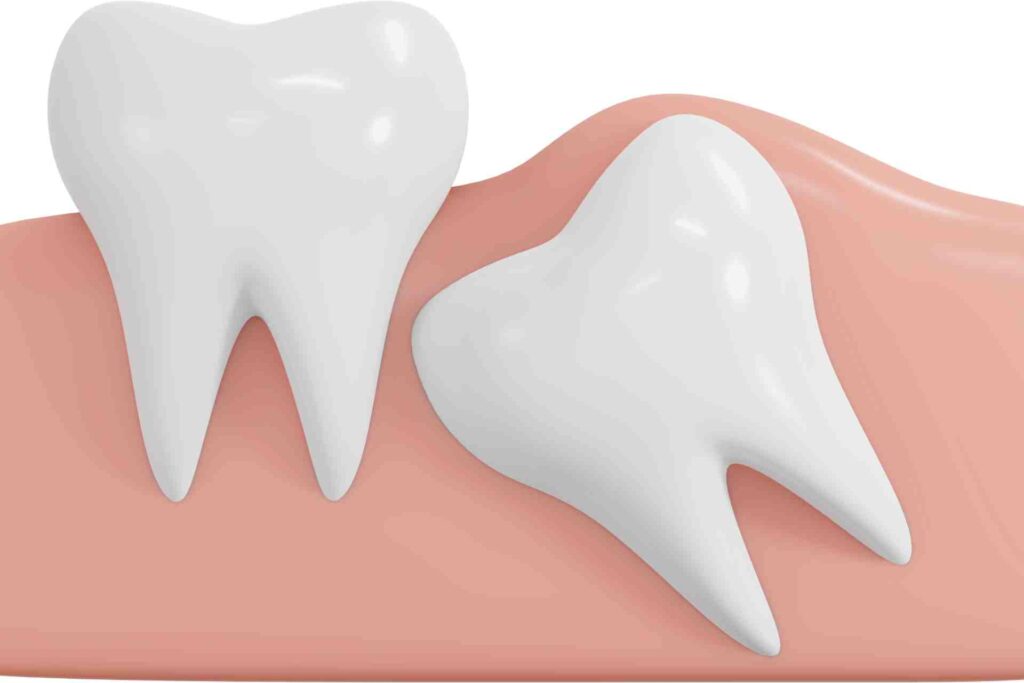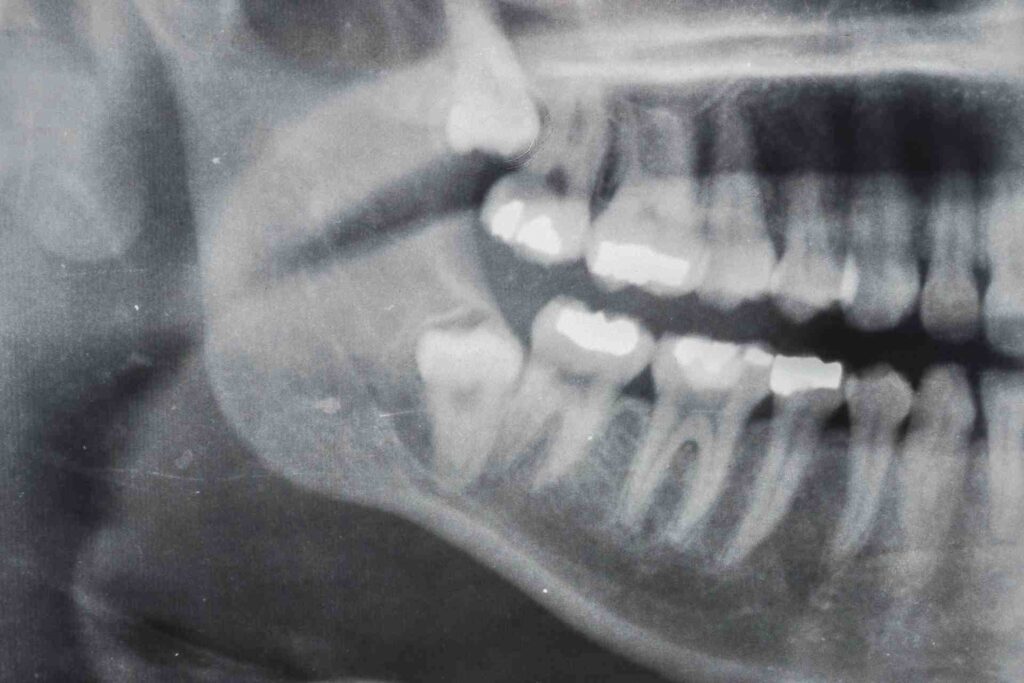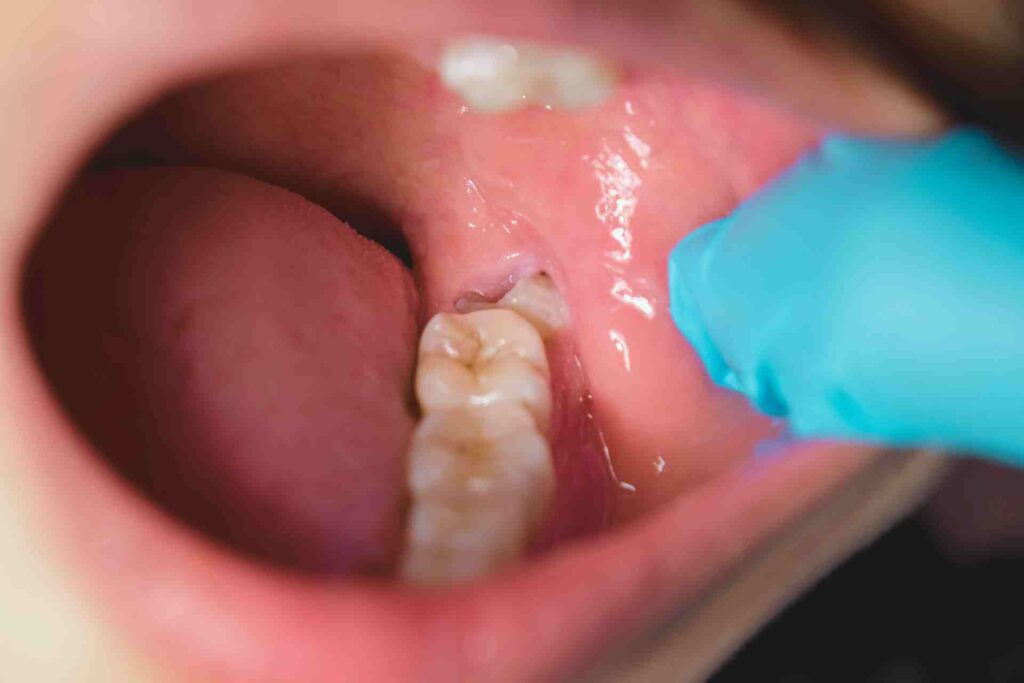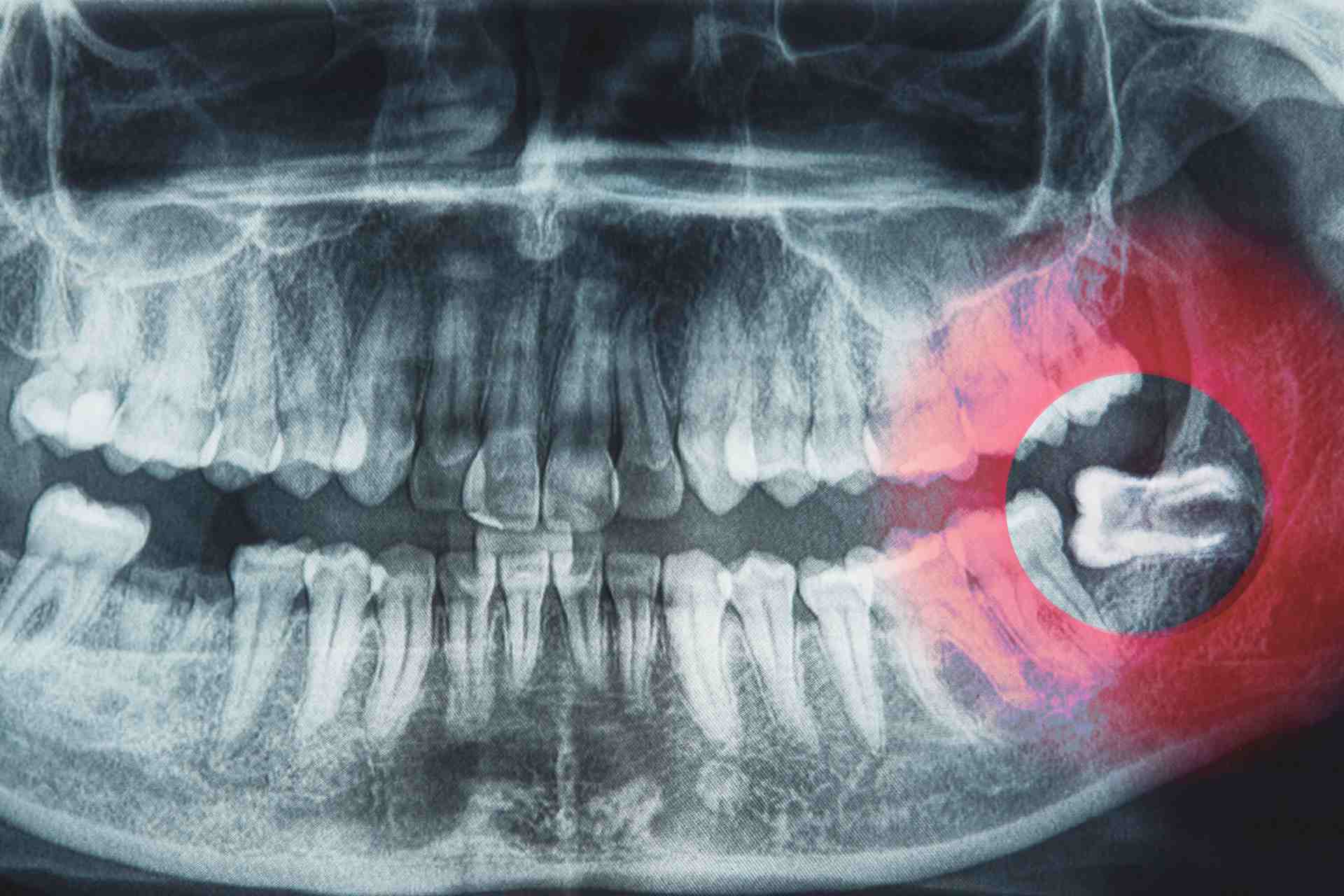Highlights:
- Most get their wisdom teeth between the ages of 17 and 25
- Some start earlier—yes, even at 15
- Pain, swelling, and gum tenderness are common signs
- Not everyone gets all four wisdom teeth
- Dentists often monitor or remove them based on space and health
Most people will see their wisdom teeth start to erupt between the ages of 17 and 25. But like so many things in dentistry—it’s not a one-size-fits-all timeline.
Some teens might notice their third molars as early as 15, while others may not see any signs well into their twenties. And in some cases, they may never come in at all.
Understanding when these late bloomers appear matters more than you might think. If they erupt normally, they might not cause any problems. But if there’s not enough space in your jaw—or if they come in at an awkward angle—they can lead to discomfort, crowding, or even infections.
The good news? You don’t have to guess your way through it. This guide will walk you through the typical timing, early signs to look out for, and when it might be time to check in with your dentist.
What Are Wisdom Teeth?

Wisdom teeth are your third molars—the very last set of teeth to develop and erupt, located at the very back of your mouth. Most people have four of them: one in each corner of the upper and lower jaw.
Back in the day, these molars played a helpful role. Early humans had tougher diets and larger jaws, so extra chewing power was essential. Wisdom teeth helped grind down roots, nuts, and raw meats when cooking and dental care weren’t yet a thing.
Today, it’s a different story. Modern diets are softer, and our jaws are generally smaller due to changes in lifestyle and evolution. That means there’s often not enough room for wisdom teeth to come in properly—leading to:
- crowding
- partial eruption
- impaction
In many cases, they end up causing more problems than they solve. That’s why dentists monitor them closely and may recommend removal even before symptoms appear.
When Do Wisdom Teeth Come In?
Wisdom teeth usually make their debut between the ages of 17 and 25, which is why they’re often called your “third molars.” This late eruption is completely normal—by this time, all your other permanent teeth are already in place.
But not everyone follows the textbook timeline.
- Some people notice their wisdom teeth starting to erupt as early as age 15.
- Others may not develop them at all—and that’s perfectly fine.
- In some cases, the teeth stay hidden under the gums or bone, never fully erupting.
So what influences the timing? A few key factors:
- Genetics – Family history often plays a big role in if and when your wisdom teeth come in.
- Jaw size – Smaller jaws may delay eruption or block it altogether.
- Overall dental development – The pace at which your teeth and bones mature can impact the timing.
Bottom line: wisdom teeth don’t follow a strict schedule. That’s why regular dental checkups and X-rays during your teen years are so important—they help your dentist keep an eye on what’s happening below the surface.
How Do I Know If a Wisdom Tooth Is Coming In?

Wisdom teeth have a way of making their presence known—even before you can actually see them. For some people, the signs are subtle. For others, they’re hard to ignore.
If you’re in your mid to late teens and wondering whether your third molars are making their move, here are a few things to look out for:
Gum Swelling Behind Molars
This is often the first clue. You might notice puffiness or redness in the gums way at the back of your mouth. That’s your wisdom tooth starting to push through.
Tenderness or Aching Jaw
As the tooth moves through bone and gum tissue, it can put pressure on nearby nerves. That pressure may cause a dull ache or soreness in your jaw, especially in the back near your ears.
Pain While Chewing
If the tooth is partially erupted or pushing against another molar, chewing on that side might become uncomfortable. You might even feel like something is stuck back there.
Headaches or Ear Pain (in Some Cases)
Because your jaw joints and nerves are closely connected to your ears and head, pressure from a wisdom tooth can radiate and feel like a headache—or even cause referred pain in your ears.
Partial Visibility in the Back of Your Mouth
If you open wide and look in the mirror, you may actually see a small piece of white tooth breaking through the gum behind your second molar. That’s your wisdom tooth making its grand entrance.
If you’re noticing one or more of these signs, it’s a good time to schedule a dental exam. A simple X-ray can show exactly what’s going on and whether those wisdom teeth are coming in straight—or causing trouble beneath the surface.
What Triggers Wisdom Teeth to Come In?
Wisdom teeth don’t follow a strict schedule, but there are a few key factors that tend to influence when they erupt. Here’s what typically triggers these late-stage molars to start making their move.
Natural Jaw Growth
As you grow through your teen years, your jaw continues to develop and widen. This natural growth creates the space and structural changes needed for wisdom teeth to begin their upward path. It’s part of why they often start coming in between ages 17 and 25—your jaw is finally mature enough.
Hormonal Shifts
Puberty and adolescence come with a wave of hormonal changes, and these shifts don’t just affect your mood or height. They also stimulate dental development, signaling to your body that it’s time for those third molars to start erupting. It’s all part of your body’s broader transition into adulthood.
Genetics
When your wisdom teeth come in—and how many you have—can run in the family. If your parents or older siblings got theirs early or had them removed at a young age, you might notice a similar pattern.
Even the size and shape of your jaw are influenced by genetics, which directly affects whether your wisdom teeth have room to come in properly.
Available Space in the Jaw
Simply put, more space usually means an easier eruption. If your jaw is roomy, your wisdom teeth may grow earlier and without complications. But if there’s not enough room, the teeth might stay impacted, come in at odd angles, or never erupt at all. That’s why dentists keep a close eye on jaw development during teen checkups.
What Problems Can Come with Wisdom Teeth?

Wisdom teeth affect and cause gum recession.
While some people get lucky with wisdom teeth that come in smoothly and never cause trouble, that’s not the norm. For many, wisdom teeth bring a range of complications—especially when there’s not enough space for them to erupt fully or correctly.
Here are the most common issues that can come with wisdom teeth:
Impaction: Trapped Under the Gums
An impacted wisdom tooth is one that doesn’t fully erupt through the gumline. It might be stuck against another tooth or the jawbone or grow sideways. This can cause swelling and pain and increase the risk of infection or cyst formation. Impacted teeth often need to be removed, even if they’re not causing symptoms right away.
Crowding: Shifting Nearby Teeth
When there’s not enough room in your mouth, a wisdom tooth can push against your second molars as it tries to erupt. This pressure may cause teeth to shift or overlap, especially if you’ve had orthodontic treatment. Crowding can affect your bite and may require braces or other corrective work down the line.
Infection: Due to Partial Eruption
Sometimes a wisdom tooth breaks through the gum only partway, creating a flap of tissue that traps food and bacteria. This can lead to inflammation, infection (called pericoronitis), and even bad breath or jaw stiffness. It’s a common issue, particularly in the lower jaw.
Cysts or Damage to Roots
In more serious cases, a fluid-filled cyst can form around an unerupted tooth. Over time, this can damage nearby teeth, roots, or even the jawbone. While rare, this type of complication often requires surgical removal and careful follow-up.
What Should I Do If They’re Coming In?
First things first: don’t panic. If your wisdom teeth are starting to show up, there’s a good chance you’ll be totally fine with a little monitoring and care.
Keep up with your regular dental checkups—your dentist can spot changes way before they cause any real issues. And if you’re feeling anything strange (like pressure or soreness), go ahead and ask for an X-ray. It’s the easiest way to see what’s happening under the surface.
At home, just keep things gentle. Brush and floss like usual, but pay a little extra attention to the back of your mouth. If your gums feel tender or swollen, try a warm saltwater rinse—it’s a simple way to calm things down and keep bacteria in check.
And if it’s feeling sore? Skip the crunchy stuff for a few days. No popcorn, chips, or anything that could poke or press on that area. Stick to softer foods until it feels better.
When Should Wisdom Teeth Be Removed?
Not everyone needs their wisdom teeth out—but in plenty of cases, taking them out is the healthiest move long-term. So how do you know when it’s time?
Here are a few of the most common reasons your dentist or oral surgeon might recommend removal:
They’re painful or infected
If a wisdom tooth is causing ongoing pain, swelling or keeps getting infected (especially if it’s only partially erupted), it’s probably time to take it out. That flap of gum tissue can trap food and bacteria—basically a recipe for repeat infections.
They’re causing crowding
Are your front teeth starting to shift or feel tight? A wisdom tooth pushing forward can put pressure on the rest of your smile. This is a big one if you’ve had braces—you don’t want your hard work undone.
There’s just not enough room
Sometimes, your jaw simply doesn’t have the space to fit four extra teeth. When that happens, wisdom teeth may come in at odd angles, get stuck (impacted), or press into other teeth. None of that feels great.
You’re starting orthodontic treatment
If you’re getting braces or aligners soon, your orthodontist may suggest removing your wisdom teeth first. It helps create room and avoids disrupting your treatment later on.
Wisdom Teeth Removal: What to Expect

If your dentist says it’s time to have your wisdom teeth out, don’t stress—it’s one of the most common dental procedures out there. In most cases, it’s a quick, routine outpatient procedure, and you’ll be back to normal before you know it.
The actual removal usually takes less than an hour, and depending on your situation, you’ll be given local anesthesia, sedation, or both to keep you comfortable. You’ll head home the same day with instructions to take it easy for a bit.
Recovery Timeline
Most people start feeling better after 2 to 3 days, with full recovery happening in about 7 to 10 days. If your teeth were impacted or required stitches, it might take a little longer—but nothing too crazy.
Tips for a Smooth Healing Process
Here are a few wisdom teeth removal tips for faster and smoother recovery:
- Stick to soft foods like yogurt, mashed potatoes, smoothies, and soups
- Use cold compresses to reduce swelling during the first 48 hours
- Avoid straws—sucking can loosen the blood clot and lead to a dry socket
- Rest and don’t overdo it—give your body a chance to heal
If you follow the aftercare instructions and keep your follow-up appointment, you’ll be back to your routine with a happier, healthier mouth in no time. And if you’re nervous? That’s totally normal. Your dental team will walk you through every step.
FAQs
Q: How do I know if a wisdom tooth is coming in?
A: You might notice swelling, gum sensitivity, or pain in the back of your mouth. Some people also feel jaw pressure or headaches. A dental X-ray can give you a clear answer.
Q: At what age do females get wisdom teeth?
A: Most girls get their wisdom teeth between 17 and 25, but some may notice them earlier—sometimes as young as 15—due to faster physical development.
Q: What triggers wisdom teeth to come in?
A: It’s a mix of things: jaw growth, hormonal changes, and good old-fashioned genetics. Everyone’s timing is a little different.
Q: Can wisdom teeth grow at 15?
A: Yes, definitely. It’s early, but not unheard of—especially if there’s enough room in the jaw. Your dentist can confirm if they’re starting to erupt.
Q: Do all wisdom teeth need to be removed?
A: Not always. If they’re growing straight, healthy, and have enough space, you may not need to remove them. But regular checkups are key to staying ahead of any problems.
Q: How many wisdom teeth do people usually have?
A: Most people have four—one in each corner of the mouth. But some people have fewer, and some don’t develop any at all (yep, that’s totally normal).
Q: Can wisdom teeth cause headaches or ear pain?
A: They can. Pressure from an erupting or impacted tooth may radiate pain to nearby nerves, which can feel like a headache or even mimic earache symptoms.
Q: What’s the best age to remove wisdom teeth?
A: If they need to come out, the sweet spot is usually between 17 and 21. Healing tends to be quicker, and it helps prevent future issues.
Key Takeaways
- Wisdom teeth usually come in between the ages of 17 and 25
- Early signs include swelling, gum soreness, and jaw pressure
- Early eruption can start as young as 15 in some cases
- Not everyone needs them removed, but monitoring is key
- Always consult your dentist if you’re unsure about symptoms
Follow @joycethedentist for more real-world answers to your dental questions—because your smile deserves clarity and care!





















